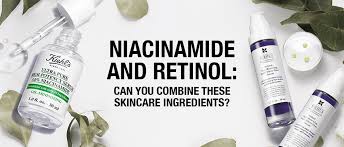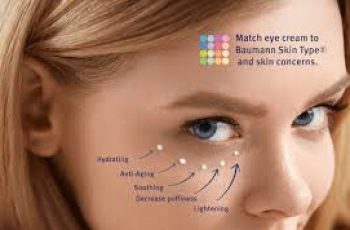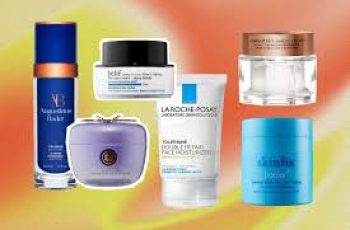Can You Mix Niacinamide and Retinol?
Believe it or not both potent powerhouses can not only be mixed but is considered a very effective skincare duo. But don’t just take my word for it, many dermatologists and skin experts recommend teaming both niacinamide and retinol in your daily skincare routine to gain optimal results.
Much like any layering of skincare products, there is sometimes a little confusion with how it done. So, if that sounds like you, look no further as everything will become a lot clearer.
Before I get into more detail about mixing these ingredients together, let me first give you a refresher about the benefits you can expect to see when applying these ingredients in your day-to-day regime.
What’s Niacinamide?
Niacinamide is a form vitamin B3 that is naturally occurring in the body but can also provide many skin benefits when applied topically onto the skin. Here are some you can expect to see when using niacinamide.
Combats signs of ageing, such as fine lines and wrinkles
Reduces frequent flare-ups in acne and breakouts
Calms the skin from skin drying conditions such as rosacea and atopic dermatitis
Repairs signs of sun damage and hyperpigmentation
Gives the skin an all-over plumped appearance
What’s Retinol?
Known as one of the most potent skincare ingredients, retinol is a form of vitamin A and has gained a reputation for its impressive anti-ageing abilities for the skin, as well as reducing the blemishes and acne flare-ups. Some other
Speeds up the skin cell cycle revealing a glowing complexion
Reduces the appearance of premature ageing, such as fine lines and wrinkles
Combats uneven skin tone and hyperpigmentation
Regulates the skin’s natural sebum production
How long after using niacinamide can I apply retinol?
Niacinamide and retinol work so well together that a 5-minute gap in between applications without the worry of the skin becoming irritated or show any signs of redness. If you are wanting to use something that is a little more time considerate, there are a selection of effective products available online or in your high street stores.
What can you not mix with niacinamide?
Niacinamide is one of the very few skin ingredients available that can be used by almost all skin types. Because niacinamide contains humectant traits, meaning it can draw water into the skin and locking it into the lower layers. This also generally means it can work well with many different skin ingredients. Having said that, there is some outdated research dating back to the 1960s advising to avoid using niacinamide and vitamin C together. Considering old forms of vitamin C being highly unstable it was considered counter effective to use both niacinamide and vitamin C together as they both deliver similar results for the skin. This usually results in them competing with each other and preventing each deliver their benefits.
What should you not mix with retinol?
There are several potent ingredients that you should avoid applying at the same time retinol. This doesn’t mean however, that you shouldn’t use these ingredients all together in your routine, it is just a case of using them at the alternate times to reap the rewards and be left with a glowing, healthy complexion.
Ingredients you should not mix with retinol
Vitamin C
Ideally it would be best to apply vitamin C during your morning routine allowing the antioxidant properties to repair and rebuild the skin. Follow your evening routine with retinol to boost collagen production and revive the complexion.
Benzoyl Peroxide
Both benzoyl peroxide and retinol cancel each other out making it a pointless affair to use both at the same time. Instead, it is considered best to alternate between each ingredient throughout the week.
AHAs & BHAs
Both chemical exfoliants tend to increase skin sensitivity and flare-ups in redness, irritation, and dryness. Remember to not overuse these ingredients especially if your routine contains retinol to avoid any unwanted side effects.
Don’t forget that if you have any concerns with using any skin ingredient, it’s best to consult with a doctor, dermatologist or trained medical professional to ensure you and your skin will benefit from introducing these ingredients into your routine.
Should I use niacinamide before or after retinol?
There are several formulations that in fact contain both ingredients and this is considered ideal for those on a tight time frame. If you are wanting to use each ingredient in separate products, I suggest first applying niacinamide followed by retinol. By applying niacinamide first you are protecting the skin’s natural barrier enabling it to protect itself from exposure to free radical damage from aggressors such as pollution, UV rays and harsh climates.
How long does it take for niacinamide to work?
You will be able to see a noticeable improvement in the skin’s complexion regarding looking more hydrated and healthier after application. For more long-term results consistency is key and if you continue to use products containing 5% niacinamide you’ll see overall marked improvement after 8-12 weeks. After this time your skin will be plumped, with signs of ageing and dehydration significantly reduced with the natural sebum production regulated.
Can I use niacinamide every day?
Absolutely, you can use it twice a day during your morning and evening routines. This will keep your skin barrier fully functioning with the correct levels of water ensuring it is able combat any free radical damage. Once you have reapplied this clever humectant in your evening regime you will find any damage caused from the day is repaired. Any other products you apply to the skin are absorbed quickly allowing them all to work whilst you catch your beauty sleep.
How do I know if retinol is working?
Generally speaking, it takes a few weeks for your skin to build its tolerance towards this potent powerhouse. The common side effects of using retinol are temporary flaking and dryness of the skin which can last for the first couple of weeks. Once you have passed the initial first weeks you will begin to see a noticeable improvement in the overall look, feel and texture of the complexion. If you are wanting to know more about introducing retinol into skincare routine and finding the best type of retinol, check out our blog post.
Don’t forget to come and follow us on Instagram for daily skin tips, exclusive discounts and product launches.
DQH Knowledge drop: In your 20s, your skin cell turnover decreases. (Cell turnover is a key component in keeping your skin youthful.) You know what else slows down? Your collagen production. Starting in your 20s, collagen decreases by about 1 percent per year. Should you want to prevent fine lines and wrinkles, start by eliminating behaviors that contribute to premature aging. “If it’s bad for you, it’s bad for your skin,” says dermatologist Michel Somenek.
“Cigarette smoking reduces blood flow to the skin and causes premature wrinkling and a dull skin texture. Making the repeated pursed motion to inhale can also cause smoker’s lines. Alcohol and recreational drugs are toxins for the skin that damage its cellular structure and DNA,” Somenek tells us. “The faster you eliminate vices while you are young, the better chance your skin and body have to recuperate.” Also, adopting an anti-aging routine in your 20s is key. After all, the best offense is a good defense. We spoke to Somenek and experts Joshua Ross and Audrey Kunin to find out more.
Keep reading for the best anti-aging products for your 20s, according to skincare professionals.
Sunscreen
“We all know that the sun is the number one cause of skin aging and starting the prevention in your 20s is very important,” Ross says. “The majority of your sun damage won’t start to appear until you’re in your 30s, so don’t wait until you see it surface or you’ll be behind the curve. Stay ahead of it with a good-quality zinc-based sunscreen worn daily.”
Farmacy Green Defense Daily Mineral Sunscreen
An invisible sunscreen with SPF 30, plus botanical extracts meant to protect skin with tons of antioxidants. Bonus: It’s clean and fine to use under makeup.
Bareminerals Complexion Rescue™ Tinted Moisturizer Broad Spectrum SPF 30
Although we recommend you use your SPF and moisturizer separately, we also understand moments when you don’t have time or energy for that extra step. For those times, this bareMinerals moisturizer is a great thing to have on hand.
Vitamin C Serum
“A great introduction to anti-aging is to start with a vitamin C serum in your morning skincare routine,” Ross says. “It’s a powerful antioxidant that will neutralize free radicals and brighten the skin.” He adds that it’s a great way to counteract the effects of the sun’s harmful rays, which, as previously mentioned, are among the biggest causes of premature aging.
Drunk Elephant C-Firma™ Vitamin C Day Serum
The Drunk Elephant C-Firma is a lightweight serum that promises to give skin a glow by combining the brightening powers of vitamin C with ferulic acid, l-ascorbic acid, and vitamin E. The included sodium hyaluronate is meant to replace hydration loss, so you shouldn’t have to deal with any irritation.
Sunday Riley C.E.O. Rapid Flash Brightening Serum
This potent serum is jam-packed with vitamin C (15 percent, to be exact), which means it’s a potential superstar at both brightening skin and dousing it in antioxidants.
Peptides
Using peptides on your skin has many benefits, says Somenek. “The skin barrier is what defends the body against pollution, UV rays, bacteria, and toxins. It can be damaged by several everyday factors. Using topical peptides aids in building a stronger barrier,” he says. “Peptides comprise elastic fibers, which are a type of protein. These fibers help to make skin appear taut and firm. Peptides can also help repair damaged skin, relieve inflammation, and even out skin tone. Some peptides can kill acne-causing bacteria that is common in 20-somethings.”
Kunin agrees, saying, “Peptides are an excellent entry point for supporting collagen.” She recommends looking for face and eye treatments that contain these collagen-boosting powerhouses.
Charlotte Tilbury Magic Eye Rescue Cream
This Charlotte Tilbury super-emollient eye cream has a base of coconut oil and shea butter (read: it’s incredibly hydrating). Botanicals plus peptides are meant to help reduce dark circles and boost collagen, respectively.
This creamy moisturizer serves up potent collagen-boosting peptides and pycnogenol, and antioxidant-rich vitamin C. “Instead of sitting on top of the skin, peptides penetrate the outer layer so they go deep. The ‘signals’ they send tell the cells to produce elastin and collagen, which are needed for youthful-looking skin,” explains Somenek.
At-Home Peel Pads
Remember that skin cell turnover fiasco we talked about earlier? One way to help support it is by exfoliating. “Exfoliation is important to help keep skin fresh and luminous,” Kunin says. She recommends using at-home peel pads as an easy and effective way to exfoliate.
“The goal in your 20s is to fight the slowing pace of cell turnover. It is wise to use products that gently exfoliate, yet still remove oil and other impurities. Products that have Alpha Hydroxy Acids (AHA) or Beta Hydroxy Acids (BHA) are a good choice.”
According to Somenek, you should only exfoliate two to three times a week. “People of all ages are guilty of over-exfoliating and that can be too much of a good thing,” he says.
Dermadoctor Kakadu C Intensive Vitamin C Peel Pad
A few swipes of this Derma Doctor powerful peel pad promise to leave your skin glowing and smooth, thanks to the seven (yes, seven) types of chemical exfoliants, including AHA and BHA. It also contains vitamin C via Kakadu plum extract for added brightening and antioxidant protection.
KEY INGREDIENTS Kakadu plum extract is sourced from the Kakadu plum, a fruit grown in northern Australia. It contains vitamin C, which restores the skin’s natural barrier, increases collagen production, and soothes irritation.
Dr. Dennis Gross Skincare Alpha Beta® Universal Daily Peel Pads
These are the gold standard of peel pads, with a cult following and over 900 five-star reviews on Sephora. They’re easy to use and contain a blend of anti-aging exfoliating acids.
Emollient Night Cream
“In your 20s, you need to start upping the hydration in your skincare routine. You may have been cautious of over-moisturizing because of acne in your teens, but as you enter your 20s, your skin transitions and becomes drier,” Ross says. “I recommend an emollient night cream added into your evening skincare regimen.”
“Twenty-somethings need to make sure that they are not using creams that will clog their pores and cause excess oil production,” says Somenek. Opt for non-comedogenic products.
Cerave Skin Renewing Night Cream
One great choice is the CeraVe Skin Renewing Night Cream, which is a non-comedogenic night cream that leaves skin soft and glowy. It combines the moisturizing powers of ceramides and hyaluronic acid.
RoC Retinol Correxion Max Hydration Creme
“The best night cream ingredients contain retinol, benzoyl peroxide, and/or salicylic acid or hyaluronic acid. The goal is to moisturize, yet remove excess oil,” says Somenek. This Roc Retinol Correxion cream fits the bill as it contains both hyaluronic acid and retinol so it promises to moisturize while also being non-comedogenic.



